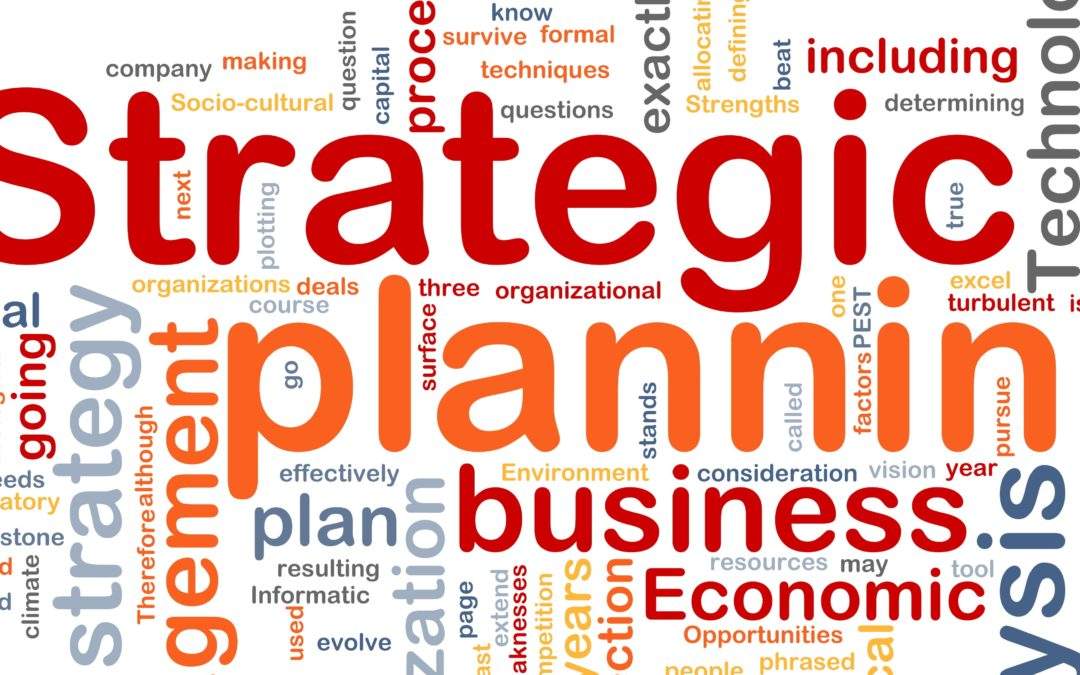For Ontario not-for-profit organizations, it’s starting to feel like there are new changes to learn about every day. The new provincial government continues to roll out change after change which has created an understandable sense of urgency. As a result, The Osborne Group is receiving an increasing number of calls for strategic planning assistance to help organizations respond appropriately.
We are often asked what the best strategic planning methodology is to respond to the changes organizations are facing. Unfortunately, there are no simple answers. Each organization’s circumstances are different and the strategic planning methodology should be tailored to those circumstances. To help get you started, I’m outlining five strategic planning models that should be considered.
1. Balanced Scorecard
The Balanced Scorecard (BSC) is a strategy performance management framework created by Drs. Robert Kaplan and David Norton in 1992. The BSC creates Strategic Directions, Objectives, Measures and Targets or Initiatives related to four key Perspectives of an organization. They include Finances, Internal Operations, Clients and Innovation and Learning. The Objectives are high-level organizational goals; the Measures assist an organization understand if its accomplishing its objective strategically; the Targets or Initiatives are key action tasks that help an organization achieve its objectives.
2. Blue Ocean Strategy
The Blue Ocean Strategy is a marketing theory developed by W. Chan Kim and Renée Mauborgne. These strategic moves create a leap in value for the company, its buyers, and its employees while unlocking new demand and making the competition irrelevant. The Blue Ocean Strategy concept refers to the “uncontested market space” (e.g. a blue ocean) that an organization can expand into with little competition versus the “Red Ocean” or market space that is either developed or saturated. If your organization is able to identify and develop create a “Blue Ocean” space it can significantly increase its value.
3. Porter’s Five Forces
Porter’s Five Forces Framework is a tool for analyzing competition of a business. It draws from industrial organization (IO) economics to derive five forces that determine the competitive intensity and, therefore, the attractiveness (or lack of it) of an industry in terms of its profitability. An “unattractive” industry is one in which the effect of these five forces reduces overall profitability. The most unattractive industry would be one approaching “pure competition”, in which available profits for all firms are driven to normal profit levels. The five forces are as follows:
- The threat of entry. Could other organizations enter the marketplace easily to compete with your organization?
- The threat of substitute products or services. Can consumers easily replace your service or product with another organization’s?
- The bargaining power of customers. Could individual consumers pressure your organization to lower costs?
- The bargaining power of suppliers. Could other organizations pressure your organization to lower your costs?
- The competitive rivalry among existing firms. Are your current competitors poised for major growth, are they poised to attract consumers away from your organization?
4. OKRs (Objectives and Key Results)
Objectives and Key Results (OKR) is a framework for defining and tracking objectives and their outcomes. The development of OKRs was developed by Andy Grove. The key result has to be measurable.
OKRs is the strategic planning model of choice for Google, Intel, Spotify, Twitter, LinkedIn, and many other Silicon Valley successes. It is one of the more straightforward strategic planning tools and is designed to create alignment and engagement around measurable goals by clearly defining:
Objectives: What you want to achieve. Choose three to five objectives that are brief, inspiring, and time-bound.
Key Results: How you’ll measure progress toward your achievements. Set three to five key results (they must be quantitative) per objective.
The OKR framework is effective because goals are continually set, tracked, and re-evaluated so organizations can quickly adapt when needed. This is a fast-paced, iterative approach that flips the traditional top-down strategic models.
5. Hoshin Planning
Hoshin (Kanri) Planning requires developing a strategic vision in order to succeed. Strategic objectives need to be defined and goals written for periods of a one to five years. Once the goals are completed, the team can focus on yearly objectives. “Hoshin Kanri is a top-down approach, with the goals being mandated by management and the implementation being performed by employees. As a result, systems need to be in place to ensure that objectives from senior management are effectively communicated all the way down the chain of command.
The Hoshin Planning approach aligns an organizations strategic goals with its projects and tasks to ensure that efforts are coordinated. This strategic management model is less focused on measures and more on goals and initiatives.
The four most critical steps in Hoshin Planning are:
- Identify key goals. Ideally focus on three to five goals.
- Play “catchball.” Share goals from top to bottom of your organization to obtain buy-in.
- Gather intel through “gemba.” Track the execution of your key goals and gather feedback from employees, using a defined process.
- Make adjustments. Initiate change based on feedback and repeat the steps of catchball and gemba.
Which Strategic Planning Model is best for your Organization?
Again, there is no simple answer to this question. It depends on numerous variables such as: How large or small is your organization? How complex are your services? How much change are you expecting in the future that is of your control? Will you be experiencing a new service delivery model such as clients receiving direct funding from the province and being able to purchase service from multiple service providers? Are agencies in your sector under pressure to amalgamate? Are there systemic changes occurring in your sector, such as the formation of Ontario Health Teams? Are there significant cutbacks in government funding in your sector?
Based on these questions you may choose one strategic planning methodology over another. The answer complex, it is not cut and dried.
We recommend you explore your changing environment carefully, and in partnership with your strategic planning consultant select the most appropriate methodology for your current environment.
For a free consultation on Strategic Planning Methodologies that may be appropriate for your organization, visit http://localhost/osborne, contact me at [email protected], or call me at 905-933-3651.






